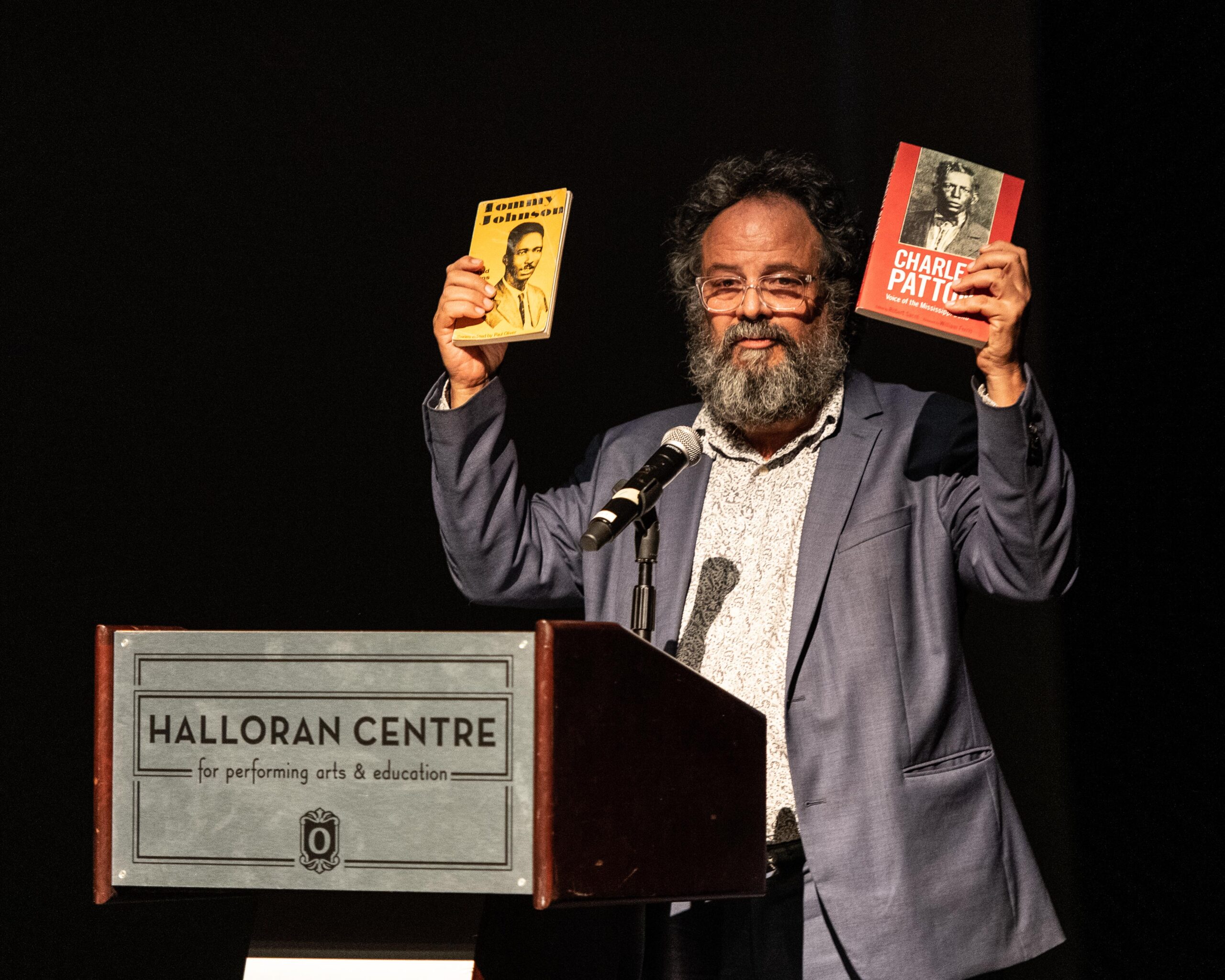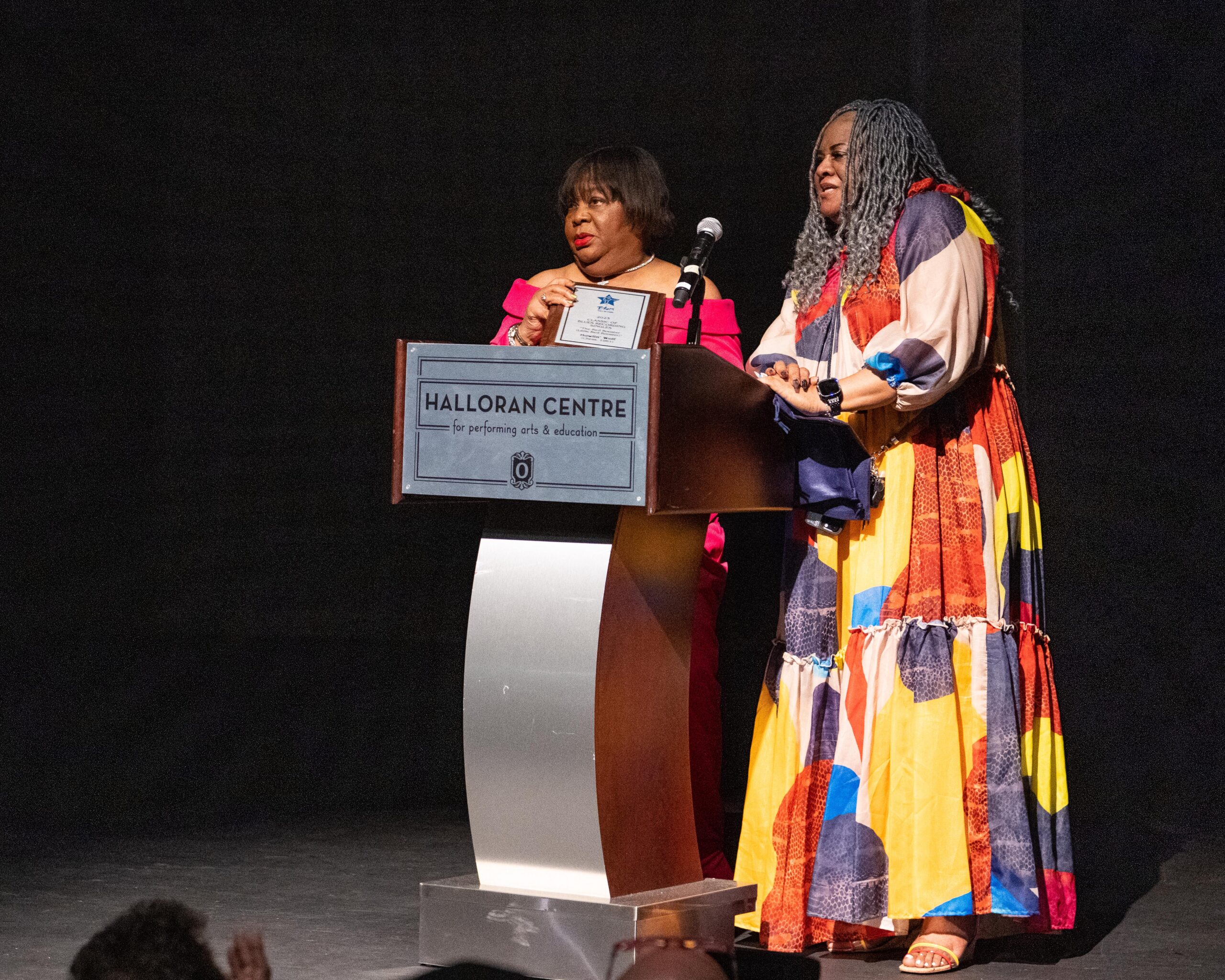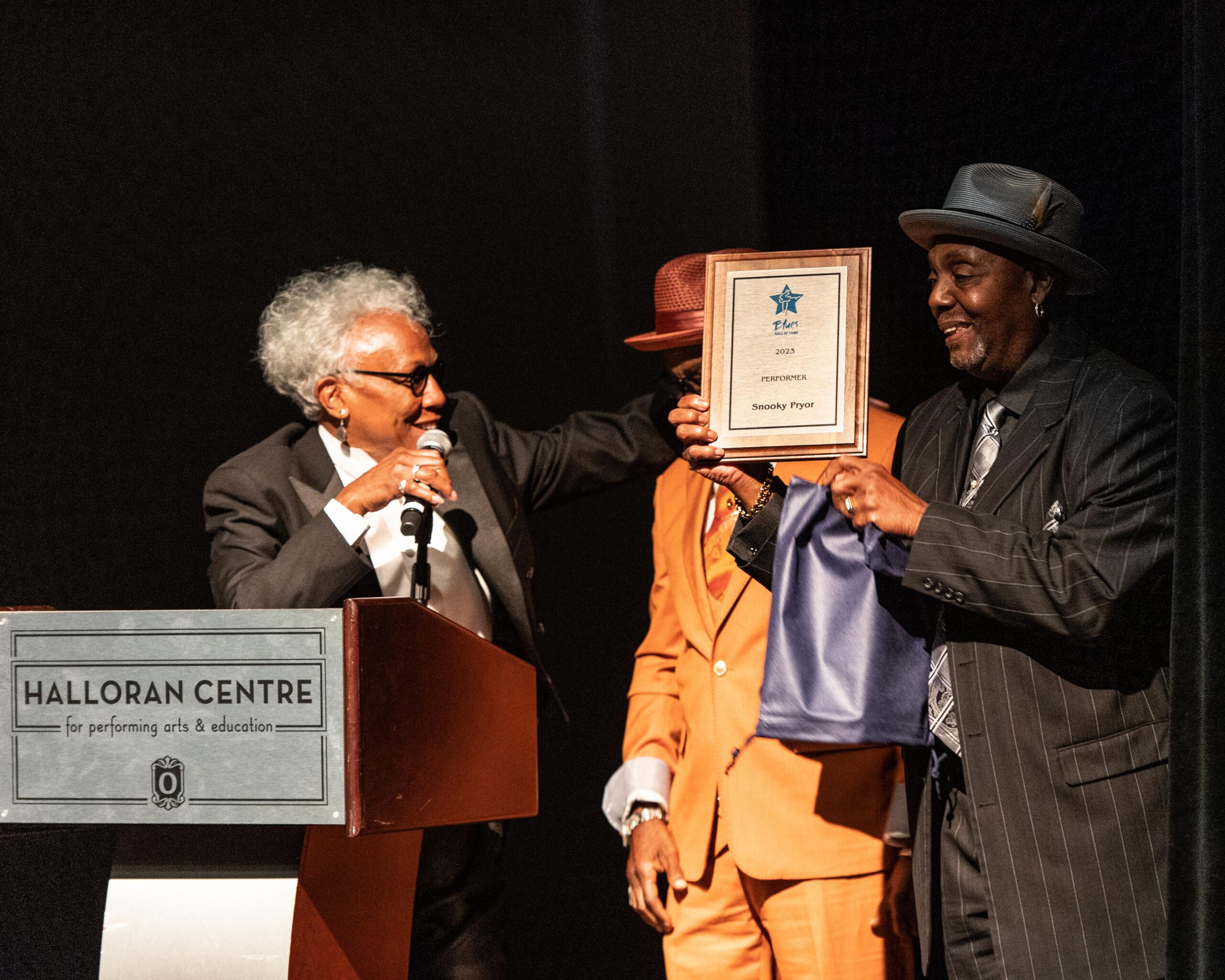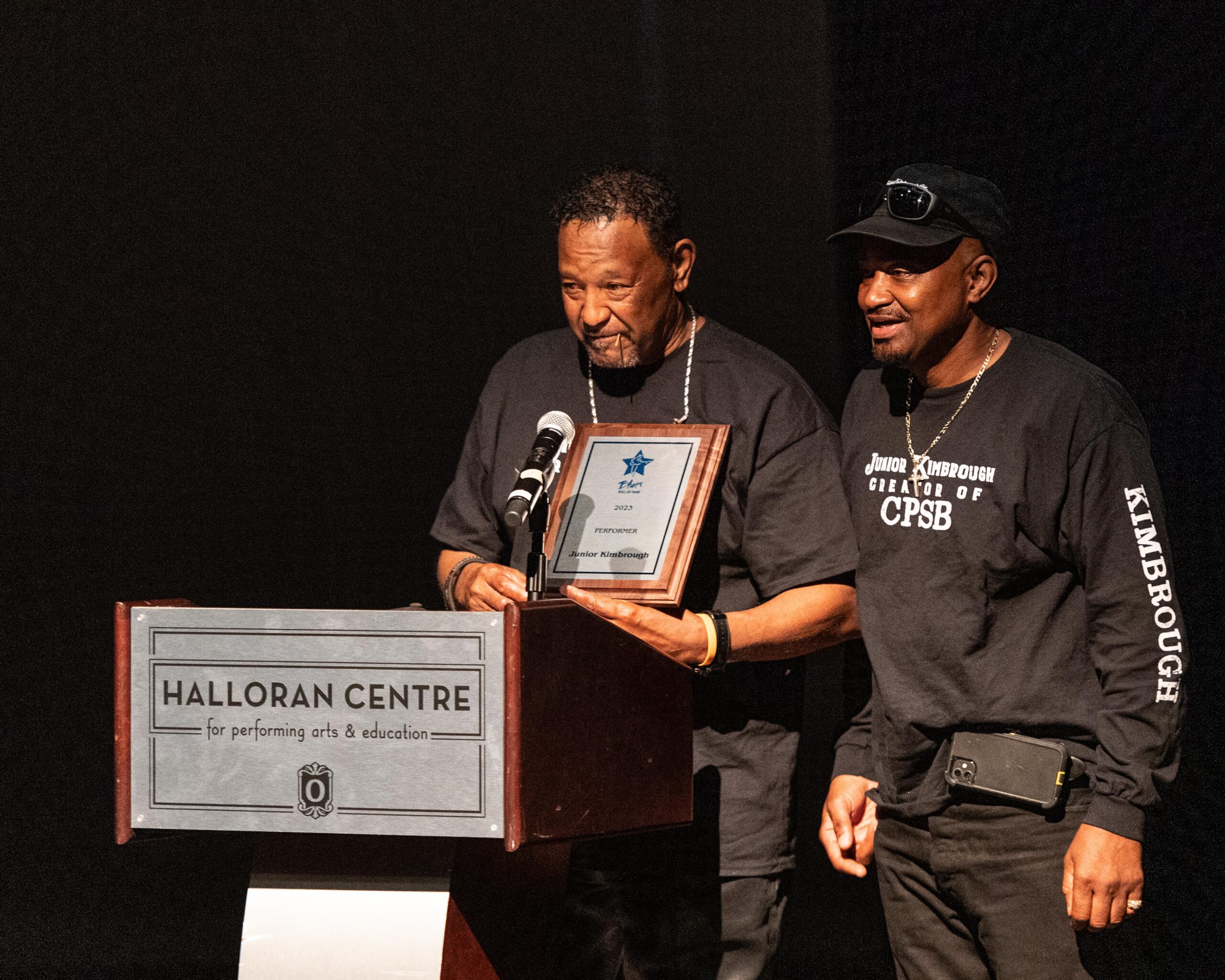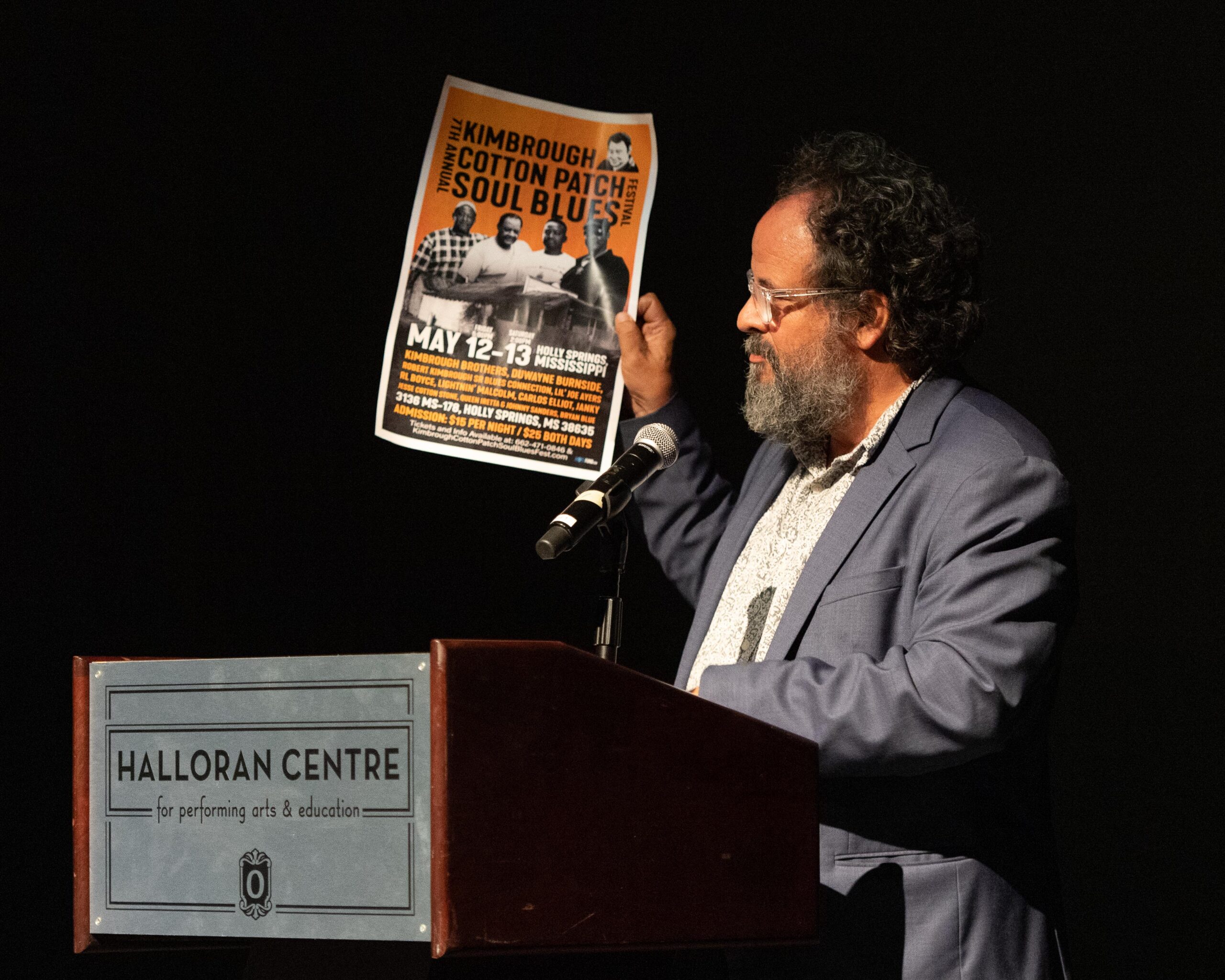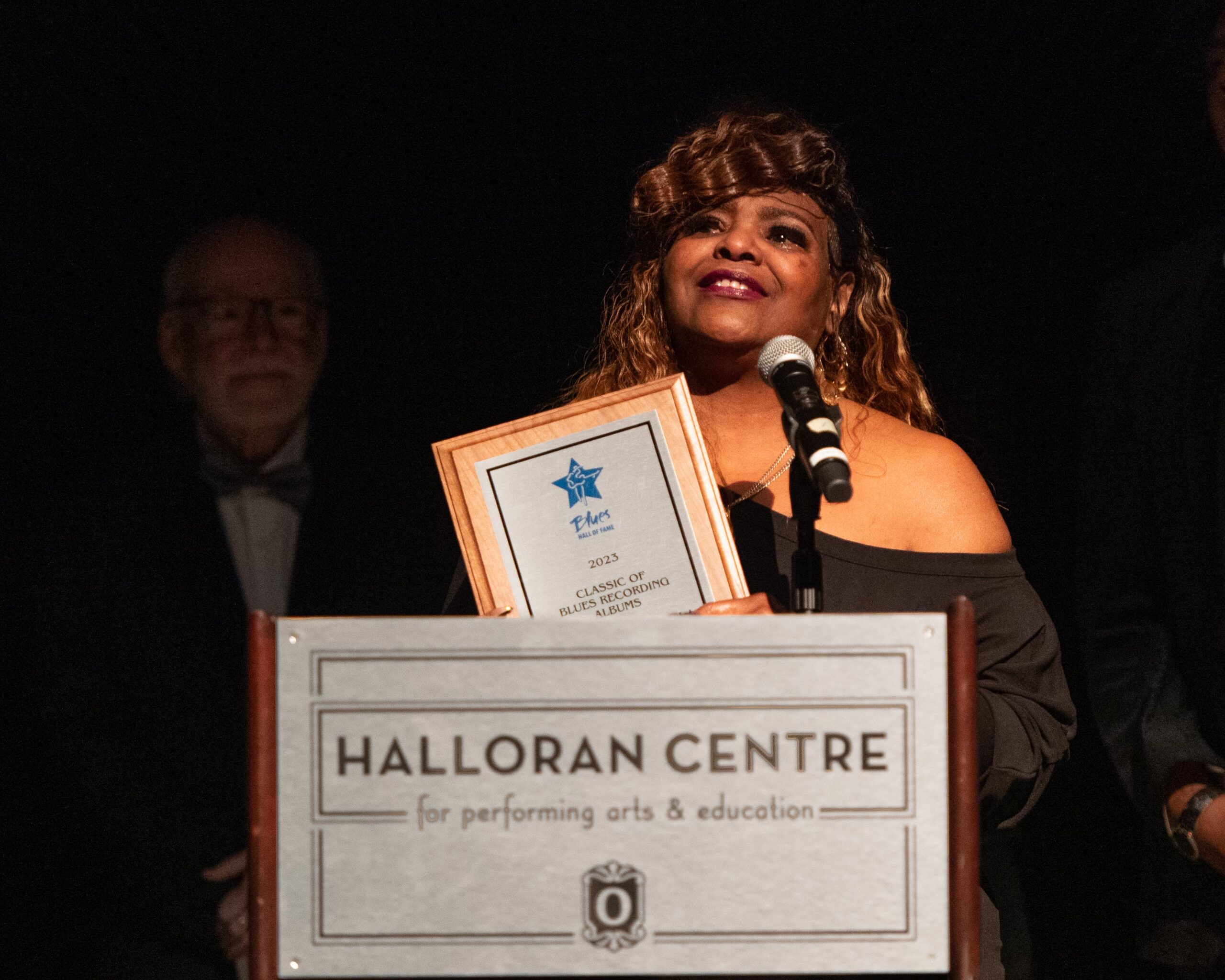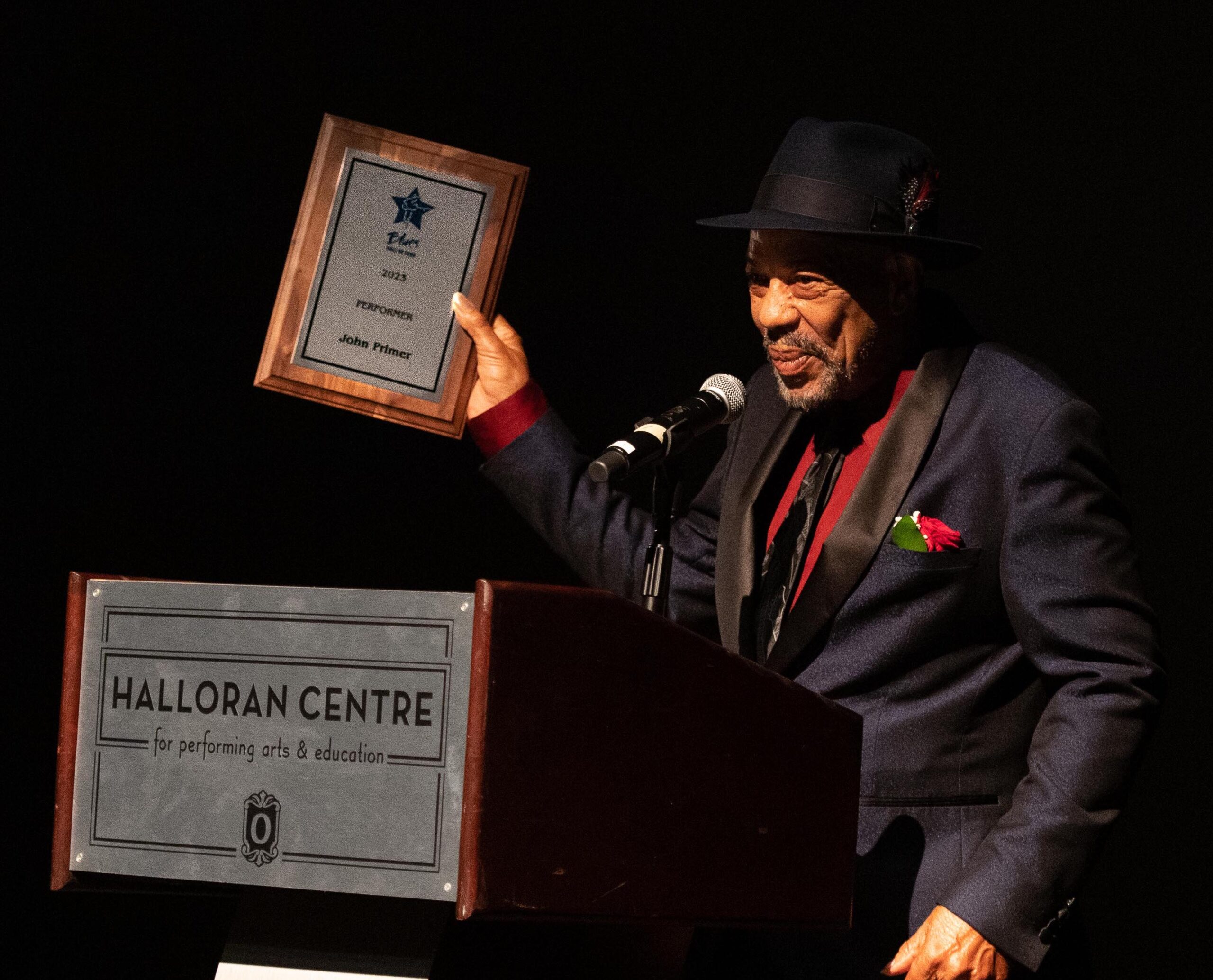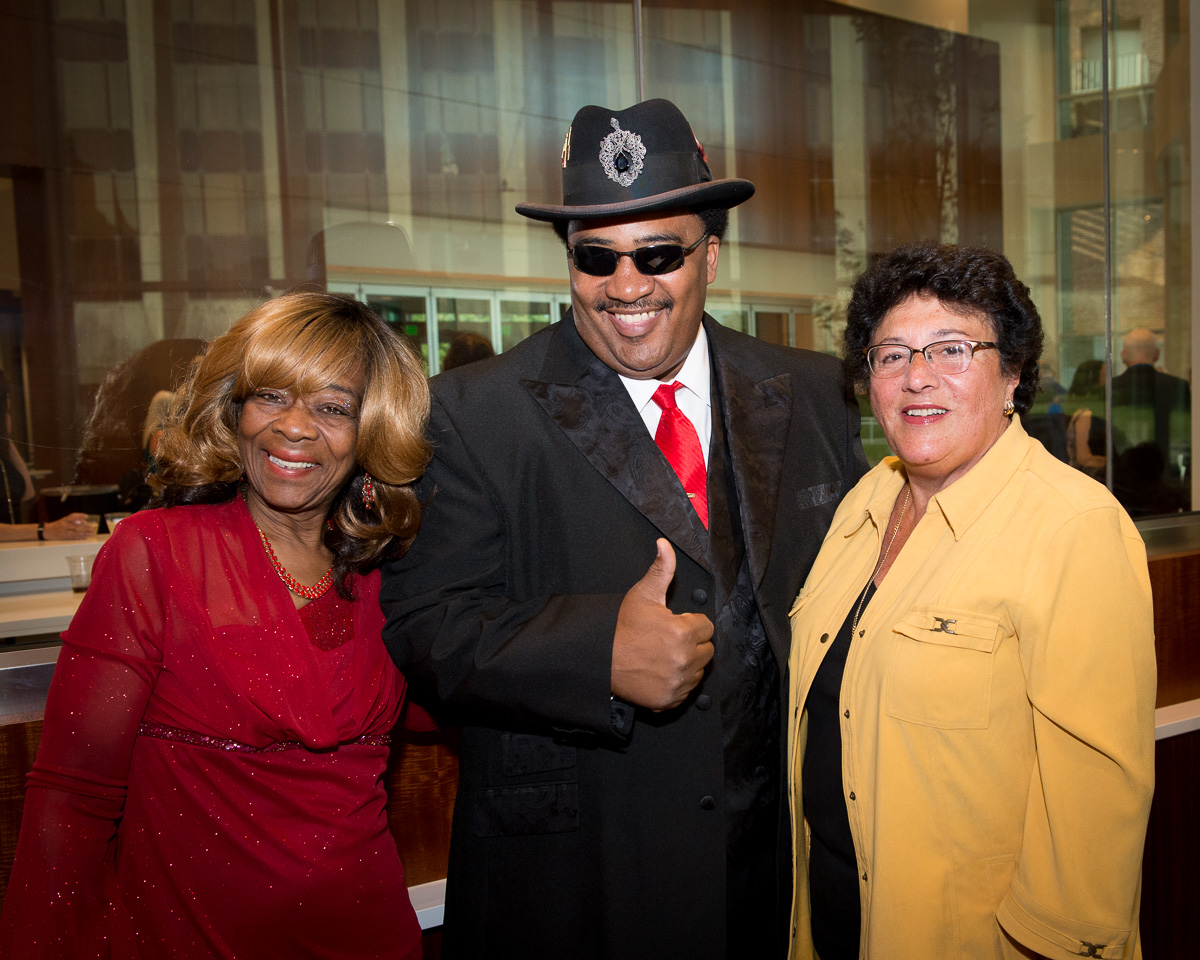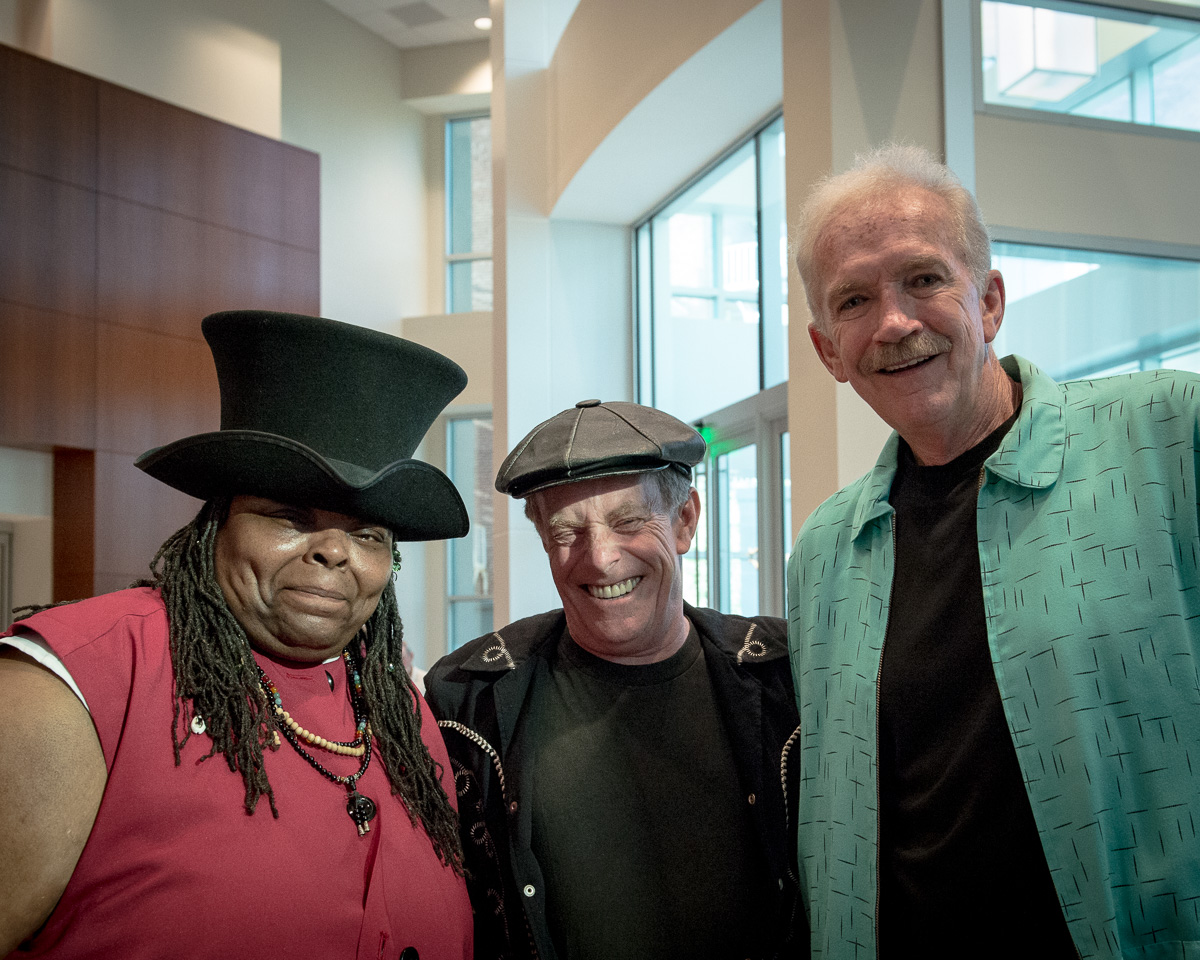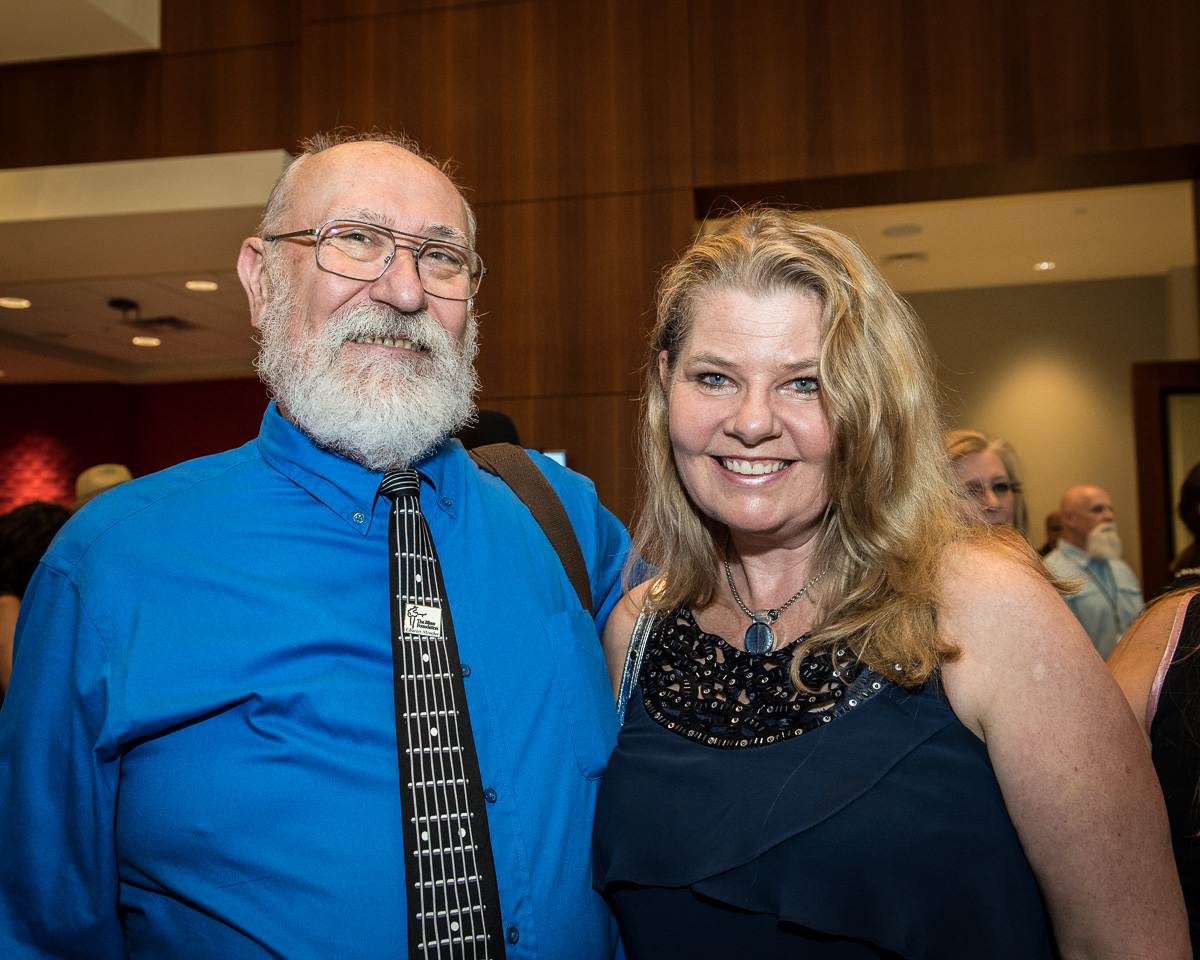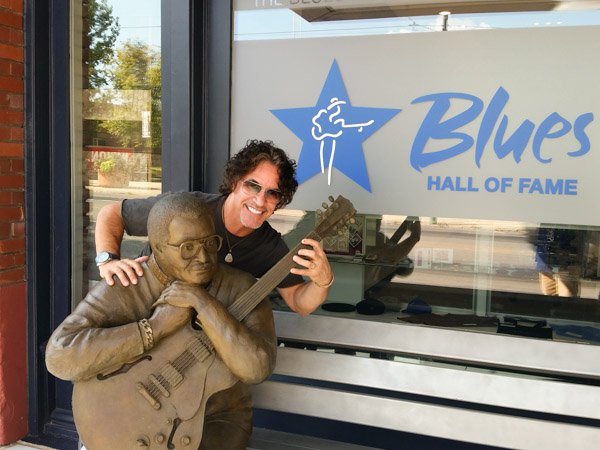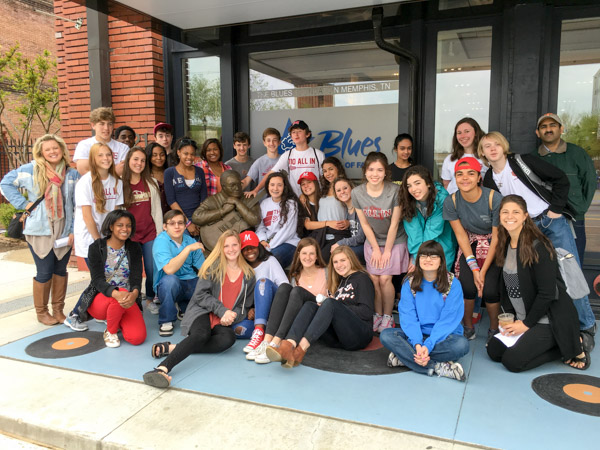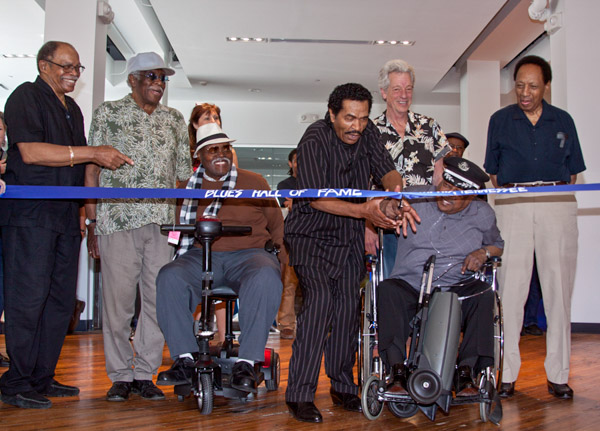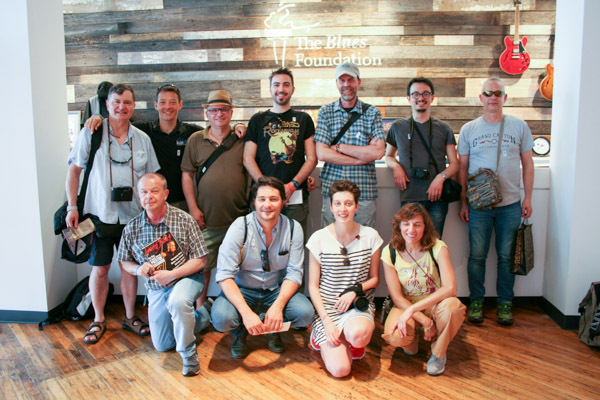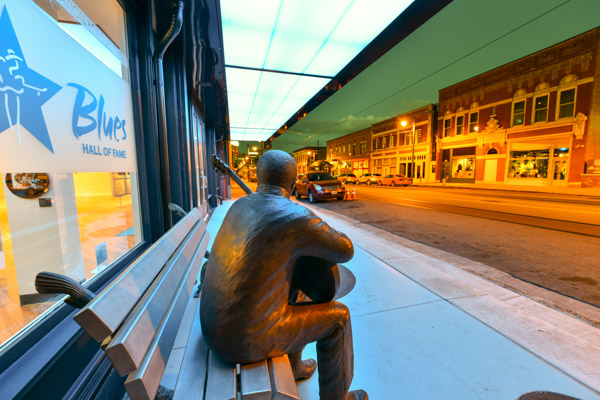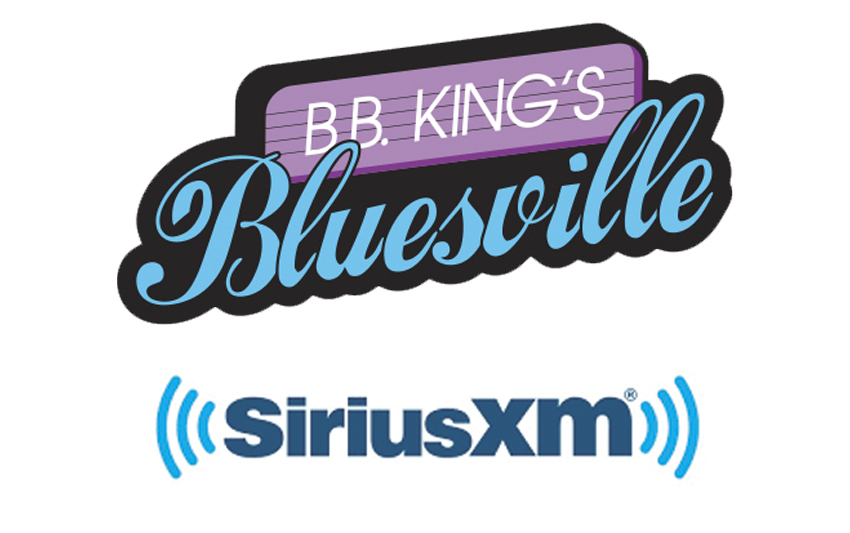CONGRATULATIONS TO OUR CLASS OF 2025 INDUCTEES!
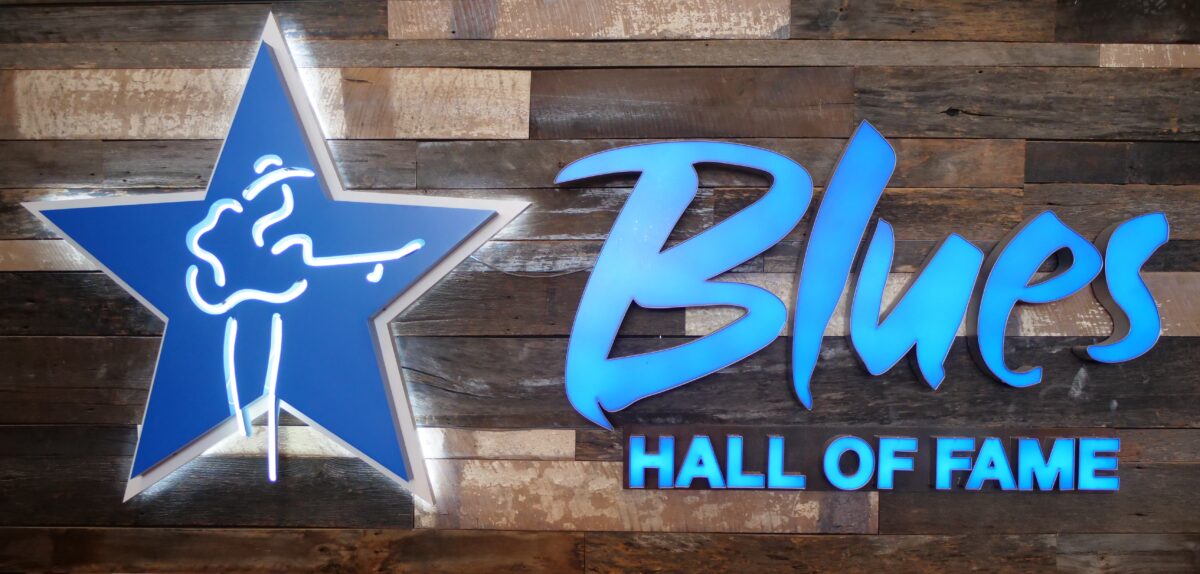
Making a Mark in Blues History
The Blues Foundation’s Blues Hall of Fame honors those who have made the Blues timeless through performance, documentation, and recording. Since its inception in 1980, The Blues Foundation has inducted new members annually into the Blues Hall of Fame for their historical contribution, impact, and overall influence on the Blues. Members are inducted into the Blues Hall of Fame in five categories: Performers, Individuals, Classic of Blues Literature, Classic of Blues Recording (Song), and Classic of Blues Recording (Album). Since 1980, The Blues Foundation has inducted over 400 industry professionals, recordings, and literature into the Blues Hall of Fame. Of the 130 performer inductees, 120 of them are African-American.
An anonymous committee of Blues scholars and experts representing all subsets of Blues music convenes each year to review potential Blues Hall of Fame candidates. Recommendations are shared with the committee via The Blues Foundation offices, but we do not accept active campaigns for any potential inductee in order to keep this process fair, devoid of political overtones, and based upon actual contributions rather than individual popularity. Candidates selected for induction are determined exclusively on their body of work over their lifetime. Names of all inductees are released to the public each spring. The Blues Foundation hosts a special Blues Hall of Fame Induction ceremony, held annually on the evening before The Blues Music Awards, as a ticketed event open to the public.
Blues Hall of Fame Museum
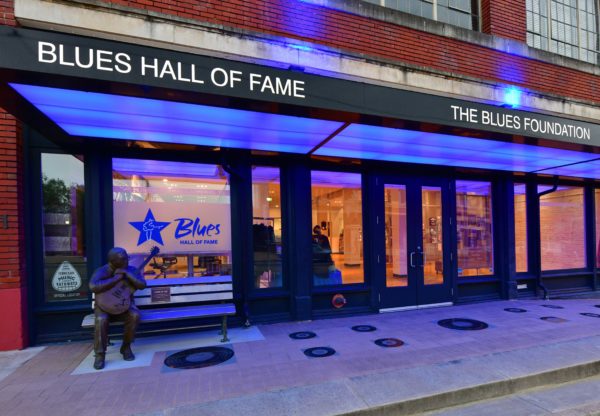
Opened on May 8, 2015, the Blues Hall of Fame Museum serves the community as a center for people to enjoy physical exhibits honoring the legends of Blues. Located in downtown Memphis – across the street from the National Civil Rights Museum – the museum holds the history and music of Blues greats for visitors to enjoy year-round.
The Blues Foundation’s 2025 Blues Hall of Fame Inductees
Blues Hall of Fame Inductee biographies and descriptions were researched and written by Jim O’Neal (bluesoterica.com) with thanks to Bob Eagle, Bob McGrath, John Broven, Roger Armstrong, Larry Cohn, Malaco Records, and Roger Naber.
Performers
 Bob Stroger, still actively touring at the age of 94, is reaping the rewards for his decades of laying the foundation for countless blues bands. No performer has ever been inducted into the Blues Hall of Fame at an older age. He was also the 2024 recipient of the Blues Music Award for Instrumentalist – Bass, the fifth time he had earned the honor.
Bob Stroger, still actively touring at the age of 94, is reaping the rewards for his decades of laying the foundation for countless blues bands. No performer has ever been inducted into the Blues Hall of Fame at an older age. He was also the 2024 recipient of the Blues Music Award for Instrumentalist – Bass, the fifth time he had earned the honor.
Stroger had been a journeyman bassist with several small blues, R&B and jazz groups in Chicago before he became a steady, recognizable fixture on the international blues scene, initially thanks to his work behind Otis Rush starting in 1975. Even then, his surname (pronounced STRO-jer) was so unfamiliar to fellow musicians (and record producers) that the first times his name appeared in album credits he was listed as “Bob Strokes,” the way Rush and Sunnyland Slim knew him.
Robert T. Stroger was born December 27, 1930, on a farm between Hayti and Swift in the Missouri bootheel. He only took an interest in music after he moved to Chicago, especially when he lived on the West Side so close to the legendary Silvio’s that he could look out and see Muddy Waters and Howlin’ Wolf through the windows. In 1949 he married the sister of guitarist Johnny Ferguson, who played in J.B. Hutto’s band. With further encouragement from Calvin “Fuzz” Jones and Bob Anderson, he learned guitar with the strings tuned to provide bass accompaniment before buying a four-string electric bass. He and his brother John had a group once called the Red Tops and then Joe Russell and the Blues Hustlers– eschewing the Stroger name another time for an easier pseudonym. Stroger went on to play locally with jazz saxophonist Rufus Forman (briefly), bluesman Morris Pejoe and others, enjoying a long stint with guitarist Eddie King playing blues and soul. His first studio recordings were with King in the 1960s. At times he also did factory work, ran a confectionery store and worked as an exterminator. In the 1950 census he described his job as “Make kitchen gadgets.”
Through Otis Rush’s drummer Jesse Green Stroger found a spot in Rush’s band, which led to studio and club work and his first European tours. Rush helped Stroger hone his playing into a strong, solid blues groove. Sunnyland Slim was a regular employer, and he also played and recorded with Snooky Pryor, Pinetop Perkins, Wille “Big Eyes” Smith, Jimmy Rogers, Carey Bell, Eddie C. Campbell, the band Mississippi Heat, Bob Corritore and many others, in the U.S. and overseas. At the urging of Sunnyland Slim he began singing and first recorded as a vocalist in 1993 on one track of a Mississippi Heat CD and then on a German CD credited to the Big Four Blues Band (with Steve Freund, Robert Covington and Sam Burckhardt).
His first CD under his own name was “In the House: Live at Lucerne, Vol. 1,” from the 1998 Lucerne Blues Festival, released by Crosscut in 2002, followed by “Bob Is Back in Town” on Airway (2006), “Keepin’ Together” on Big Eye (with Kenny “Beedy Eyes” Smith, 2014) and “That’s My Name” on Delmark (with a Brazilian band, the Headcutters, 2022). He also appears on various festival CDs from Lucerne and elsewhere and has joined several all-star aggregations. He has recently toured in a Chicago Blues SuperSession package, beaming with pleasure at still being able to do what he loves onstage. Grateful for the help offered him along his path to success especially by Rush, Sunnyland, Jimmy Dawkins and Eddie Taylor, he has in turn passed his knowledge and advice along, providing instructions to young musicians at the Pinetop Perkins Foundation in Clarksdale, Mississippi, every year.
 William Bell, best known for his pioneering work at Stax Records in Memphis, has kept that honored legacy alive during his long career as soulful singer, songwriter, producer and label owner. Bell’s music has also encompassed gospel, doo-wop, jazz, R&B, blues, reggae, funk, disco and collaborations with rappers, and in recent years he has been a perennial contender in the soul blues categories of the Blues Music Awards.
William Bell, best known for his pioneering work at Stax Records in Memphis, has kept that honored legacy alive during his long career as soulful singer, songwriter, producer and label owner. Bell’s music has also encompassed gospel, doo-wop, jazz, R&B, blues, reggae, funk, disco and collaborations with rappers, and in recent years he has been a perennial contender in the soul blues categories of the Blues Music Awards.
Born William Henry Yarbrough in Memphis on July 16, 1939, he took the name Bell in honor of his grandmother, whose name was Belle, He started singing in church and began writing songs and recording as a teenager with a vocal group, the Del-Rios. He also worked with Phineas Newborn Sr.’s jazz group and found a mentor in another older Memphis veteran, Rufus Thomas. In 1961 Chips Moman produced Bell’s first solo record at Stax, the plaintive “You Don’t Miss the Water,” which hit “Cash Box” magazine’s national charts in 1962 and set Bell on tour. But Uncle Sam interrupted his trajectory by calling him into the U.S. Army for two years. Bell stayed with Stax, recording several albums and scoring 14 more hits on either the “Billboard” or “Cash Box” R&B or pop singles charts through 1974, including two duets with Judy Clay. He wrote songs with Booker T. Jones and others recorded by various Stax artists, including “Born Under a Bad Sign,” which became a classic for Albert King. Bell and Jones also produced King’s “Crosscut Saw.”
Bell and his manager, Atlanta promoter Henry Wynn, started their own label, Peachtree, in 1968 and recorded Mitty Collier, Johnny Jones & the King Casuals and others. Bell moved to Atlanta and pursued an acting career while also establishing another label, Wilbe, to release records by himself, bluesman Joey Gilmore and others. A Wilbe production deal with Mercury Records garnered him his best selling LP, 1977’s “Coming Back for More,” and his only No. 1 R&B single, “Tryin’ to Love Two.” Further hits followed on Kat Family and Wilbe. He was featured in “Take Me to River’ both as a televised 2014 documentary on Memphis music and on tour.
Stax, revived under new ownership, released his live album “This Is Where I Live,” which won the GRAMMY Award as Best Americana Album of 2016. Bell is still active with his Wilbe label and songwriting, with nearly 300 songs registered at the performance rights organization BMI. His songs have been recorded by Jerry Lee Lewis, Linda Ronstadt, Otis Redding, Robert Cray, Bruce Springsteen and a plethora of others in many genres. He has continued to bolster his resume with appearances at the Chicago Blues Festival, the White House, and other events, a 2020 National Endowment for the Arts National Heritage Fellowship, a 1997 Rhythm & Blues Foundation Pioneer Award, and induction into halls of fame in Georgia, North Carolina and Memphis.
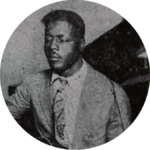
Blind Willie Johnson never recorded the blues, but the Texas guitar evangelist’s music has enraptured a multitude of blues fans and musicians for nearly a century. His genre has come to be called “holy blues” for its similarities to the blues format, its intensity and the superb slide guitar technique. “The Soul of a Man,” an episode in Martin Scorsese’s documentary series ”The Blues,” was named after a 1930 Johnson record and featured bluesman Chris Thomas King portraying Johnson—and actor Laurence Fishburne voicing Johnson in the scripted narration. And when the Voyager 1 and 2 space probes were launched in 1977, they each carried a recording, “The Sounds of Earth,” with audio tracks including Johnson ’s “Dark Was the Night—Cold Was the Ground.”
He was born Willie Johnson Jr, on January 25, 1897, in Pendleton, Texas, according to information he supplied when he registered for the World War I draft in Houston, although different dates and birthplaces have been cited elsewhere. Blinded as a child, reportedly by his stepmother, he took up guitar and based some of his music on hymns he learned in church in Marlin, Texas. Playing streetcorners, churches, and revivals with a tin cup tied to his guitar for tips, he befriended other blind street musicians and traveled through Texas and beyond.
He first recorded in Dallas for Columbia in 1927. The company hailed his music as “nothing like anything else” in advertisements, and he became one of the most popular Black recording artists of the era until the Depression hit the record industry, and he never recorded after 1930. He met blues and gospel guitarist Blind Willie McTell at a Columbia session in Atlanta and the pair traveled and performed together, according to McTell. A preacher who knew him recalled Johnson once playing on one street corner while the legendary Blind Lemon Jefferson was playing on another. In addition to his itinerant performing career the pious Johnson also pastored his own churches as Reverend W.J. Johnson at times.
Among his best known recordings were “Mother’s Children Have a Hard Time” (aka “Motherless Children”), “It’s Nobody’s Fault But Mine,” “John the Revelator,” “Jesus Make Up My Dying Bed,” “Lord I Just Can’t Keep From Crying,” Keep Your Lamp Trimmed and Burning,” “God Moves on the Water,” and “Let Your Light Shine on Me.” Most were religious but he also delivered morality messages and topical songs—but not blues per se. Even so, “Dark Was the Night,” which he hummed and moaned without actual lyrics, was selected as a Classic of Blues Recording by the Blues Hall of Fame in 1999. Many blues, folk and rock stars later recorded songs from the Johnson repertoire including Son House, Bob Dylan, Eric Clapton and Led Zeppelin. The 2016 Alligator CD “God Don’t Never Change: The Songs of Blind Willie Johnson” featured interpretations by Tom Waits, Lucinda Williams, Rickie Lee Jones, the Blind Boys of Alabama and others.
Johnson’s vocals often erupted into harsh, raspy declamations, sometimes enhanced by the sweet phrases sung by Willie B. Richardson. Later known as Willie B. Harris, she and another woman, Angeline Johnson, both claimed to have married Johnson and provided much of what we know about him. Angeline (aka Angilena, Anna, Anna Bell, Annie or Antonia in various documents) was the older sister of blues steel guitarist L.C. “Good Rockin’” Robinson, who cited Johnson as an early influence. Johnson died September 18, 1945, of malarial fever after a fire destroyed his home and House of Prayer church in Beaumont. The Texas Historical Commission placed a marker at the site in 2010.
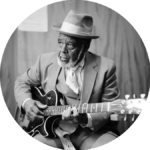
Henry Townsend, a key contributor to the St. Louis blues sound of the pre-World War era, enjoyed one of the longest careers in blues history. He recorded in every decade from the 1920s through the 2000s and was preparing to perform at a festival when he died on September 24, 2006, at the age of 96. A few months later he shared a posthumous GRAMMY Award for the album “Last of the Great Mississippi Delta Bluesmen: Live in Dallas,” recorded alongside fellow veterans Robert Lockwood, Honeyboy Edwards and Pinetop Perkins.
Townsend was not a Delta blues stylist, although he was born in the Delta town of Shelby on October 27, 1909. His family moved to other locales in Mississippi, Memphis, Caruthersvlle, Missouri, and Cairo, Illinois, where Townsend caught a freight train to St. Louis to avoid a beating from his father. Inspired in St. Louis by guitar icon Lonnie Johnson, Clifford Gibson, Henry Spaulding, and other local bluesmen, Townsend bought his first guitars. He found he had a gift not only as an instrumental virtuoso but also as a lyricist who could improvise new songs on the spot. On November 15, 1929, at the age 20, Townsend made his first records for Columbia.
Townsend made further records for Paramount, Victor and Bluebird in the 1930s and played on sessions by St. Louis-based artists Roosevelt Sykes, Walter Davis, Robert Lee McCoy (aka Robert Nighthawk), Big Joe Williams, and Pine Top Sparks, as well as Memphis Minnie on one outing to Chicago. He played guitar on—and said he wrote—the first-ever version of “Every Day I Have the Blues” by Sparks in 1935. He most frequently teamed with pianists Sykes or Davis in taverns and nightclubs, and also played with Robert Johnson, John Lee “Sonny Boy” Williamson and many others, while also working as a taxi driver. He learned piano from Sykes and in return taught Sykes some guitar. After serving in World War II he moved to Chicago and recorded for the Bullet label in 1948 but as public tastes in blues changed, he decided to find steady employment back in St. Louis as a hotel manager and then as an insurance collector. Whether as a musician or in other work, he was known for his thoughtful, businesslike, and uncompromising demeanor. He earned the nickname “Mule” for his stubborn, determined nature.
As researchers sought out older bluesmen in the 1960s, several of Townsend’s prewar recordings were reissued on LP and he began to record again. He recorded full albums for Prestige/Bluesville, Adelphi, Nighthawk, Swingmaster, Wolf, Blueberry Hill and APO and made appearances on several others. He performed at festivals and concerts in the U.S. and Europe playing guitar and piano, sometimes with his wife Vernell, and served as a mentor to young musicians in St. Louis. As a former Paramount recording artist, he was scheduled to highlight the inaugural Paramount Blues Festival in Grafton, Wisconsin, in 2006 but fell ill when he arrived and passed away in a hospital in nearby Mequon.
Townsend was awarded the National Endowment for the Arts’ National Heritage Fellowship in 1985 and was honored on the St. Louis Walk of Fame in 1995. His autobiography, “A Blues Life: Henry Townsend,” as told to Bill Greensmith, was published in 1999.
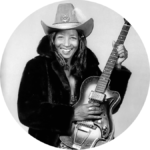
Jessie Mae Hemphill cut a unique and colorful figure as queen of the North Mississippi Hill Country blues scene. A three-time winner as traditional female blues artist of the year in the 1987, 1988 and 1994 W.C. Handy Blues Awards (later renamed the Blues Music Awards), Hemphill came from a long line of musicians dating back to her great-grandfather Dock Hemphill and including her parents and aunts as well as her grandfather, Sid Hemphill, who recorded for Alan Lomax and Lewis Jones in 1942. Her rhythmic, rough-hewn music was spirited and gritty–unadorned, in contrast to her sequined apparel, wigs, cowboy hats, and other bold accoutrements.
Born Jessie Mae Graham in Panola, Mississippi, on October 18, 1923 (a decade before the birthdate she claimed), she learned drums and guitar as a child and played in various fife and drum bands at Hill Country picnics over the years, first with Sid Hemphill and later with Napolian Strickland, Otha Turner and others. She lived in Memphis on and off during the 1940s and ‘50s and worked as an elevator operator and as a waitress at several cafes and clubs. She performed at times but her musical career did not gain momentum until she began recording and touring as a singer-guitarist in the late 1970s. To enhance the rhythmic impact of her modal one-chord style, she also played a tambourine with her foot and later added ankle bells.
Folklorist George Mitchell first recorded Hemphill in 1967 but those sides were not released until 2008 by Fat Possum. David Evans of Memphis State University produced most of Hemphill’s records and also played guitar behind her on many sessions and personal appearances. Two singles and an LP were released on the university’s High Water label, but the first album, “She-Wolf,” came out on a French label, Vogue, in 1981. Other labels including Hightone/HMG, Inside Sounds and Mississippi Records, also later released material from Evans’ sessions. The High Water LP “Feelin’ Good” won a 1991 Handy Award. Her work has also been featured on Black & Blue and Wolf. Hemphill played a drum on a 1980 European tour (the first by an African-American fife and drum band) and in the 1991 documentary “Deep Blues.” She and Abe Young played drums with fife blower Otha Turner on the childrens’ TV show “Mister Rogers’ Neighborhood” in 1982. She was later featured in a French documentary by Marc Oriol, “Me & My Guitar, Jessie Mae Hemphill.”
Hemphill became a favorite on the traditional blues circuit in the U.S. and internationally but her blues career was cut short by a stroke in 1993 that left her unable to play guitar. She still entertained visitors with her stories at her trailer home and could still sing and play tambourine—but abdicated the blues and devoted herself to gospel music. Her last recording was a double gospel CD also released on DVD, “Dare You to Do It Again,” in 2004, on 219 Records. Hemphill died in Memphis hospital on October 22, 2006. A Mississippi Blues Trail marker was placed in 2011 at the cemetery where she was buried in Senatobia.
Individuals – Business, Production, Media, & Academic

Bob Geddins produced a treasure trove of records that defined the down-home blues and gospel sounds of the San Francisco/Oakland area in the post-World War II years. While West Coast blues is often associated with smoother, polished urban styles, Geddins’ most memorable records often were raw excursions into desolation and gloom—“Tin Pan Alley” by Roy Hawkins being a prime example. His productions reflected the influences and tastes of many Black workers and musicians who migrated to the Bay Area for jobs during and after the war from Texas, Oklahoma, Arkansas and Louisiana. Most of Lowell Fulson’s early records were cut for Geddins, who also recorded Jimmy McCracklin, Roy Hawkins, K.C. Douglas, Johnny Fuller, L.C. “Good Rockin’” Robinson, Mercy Dee Walton, Juke Boy Bonner, Saunders King, Sugar Pie DeSanto, Big Mama Thornton, and many gospel groups. The records often spotlighted the guitar exploits of Lafayette Thomas, Ulysses James or Johnny Heartsman.
Robert Lee Geddins was born on February 6, 1913, in Highbank, Texas, near Marlin (onetime home of fellow 2025 Blues Hall of Fame inductee Blind Willie Johnson). He had heard the blues on records and at Saturday night suppers before he hopped a westbound train in the 1930s. He saw an opportunity to market music in the Bay Area after starting out in Los Angeles, where he worked at a drug store and for the city’s streets department before opening a record store. He began recording in 1945 at Bay Area radio stations and over the years operated record stores, repair shops, studios and pressing plants from several business locations. His earliest releases included the Rising Star Gospel Singers, Fulson, and his own vocal blues “Irma Jean Blues,” named after his wife. He owned or partnered in various record labels, including Down Town, Cava-Tone, Big Town, Rhythm, Irma, Art-Tone, Plaid, Check, Shirley, Vel, Veltone, Gedinson’s and Wax, and made deals to release his songs or productions on other labels—Trilon, Gilt Edge, Swing Time, Modern, Specialty, Aladdin and Chess/Checker among them.
McCracklin had the biggest hit with “Just Got to Know” on Art-Tone in 1961, while other records that charted nationally included Sugar DeSanto’s “I Want to Know” (1960), Jimmy Wilson’s “Tin Pan Alley” (1953), Fulson’s “Three O’Clock Blues” (1948), and Roy Hawkins’ Modern sides “Why Do Things Happen to Me” (1950) and “The Thrill Is Gone” (1951). The latter three were all later recorded by B.B. King, and other Geddins productions or compositions likewise gained more fame through cover versions. The Steve Miller Band and Alan Jackson scored with K.C. Douglas’ “Mercury Boogie” and Jumpin’ Gene Simmons hit the pop charts with “Haunted House,” which Johnny Fuller had waxed as a rock ‘n’ roll novelty in 1958 for Specialty. Fuller and Geddins also came up with “Johnny Ace’s Last Letter,” which only made the charts when covered by Johnny Moore’s Blazers, and “Fool’s Paradise,” recorded by Charles Brown and Mose Allison. Buddy Guy’s Chess single “My Time After While” is much better known than the original Tiny Powell version on Geddins’ Wax label. Geddins had paid little attention to writing and publishing rights when he began but was able to file 74 compositions with BMI over the years. McCracklin and Geddins disputed each other’s authorship of various songs but worked together for years. McCracklin taught piano to Geddins’ son Bob Jr. and brought him into his band, and the junior Geddins participated in recording sessions with many artists.
Although he profited from occasional hits, too many business arrangements resulted in Geddins’ loss of money, master tapes, or song rights. He rarely had the cash to build and promote his would-be music empire—especially when he had a wife and 13 children to support. Record-keeping was not a strong suit either, and piecing together a definitive chronology of his massive output has posed a task for puzzled discographers and historians. But the musical legacy he left was singularly impressive. Lowell Fulson recalled, “Bob Geddins would bring out the best in an artist. If you had talent he’d draw it out of you. He taught me how to rephrase the blues and how to breathe properly.”
Chris Strachwitz of Arhoolie Records compiled some of Geddins’ quintessential gutbucket blues productions on an “Oakland Blues” LP in 1970. JSP and other labels have issued more extensive CD anthologies in the years since, showcasing blues of both hardcore and more contemporary varieties, rock ‘n’ roll, soul, R&B and novelty material such as a song by “The Mystery Man” (Geddins himself) taking on an Italian accent on “Loueggie Blues.”
Geddins’ work stands as an enduring legacy of the days when Oakland’s 7th Street was a vibrant center of Black business and nightlife, overflowing with musical talent. Geddins, who was awarded a key to the city in 1983, is honored with a plaque on the 7th Street Walk of Fame. He died on February 16, 1991, of liver cancer, still recovering from a stabbing suffered when was robbed while cashing a royalty check.
Classic of Blues Literature
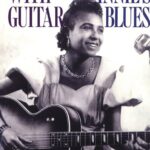
Woman with Guitar: Memphis Minnie’s Blues by Beth and Paul Garon (1992)
Paul and Beth Garon saluted Memphis Minnie’s iconic status as a premier blues artist and symbolic feminist figure in the initial publication of “Woman With Guitar: Memphis Minnie’s Blues” in 1992 by Da Capo Press. A revised edition from City Lights Books in 2014 added considerably to the chapters on her life and career that begin the book, with a foreword by Jim O’Neal and more detailed appendices and documentation based largely on various contributors’ online research into sources not available in 1992. The biographical section brought research up to date on Lizzie Douglas, whose nom du disque became Memphis Minnie when she began recording 1929. Often teamed with her first husband, Kansas Joe McCoy, or her second, Ernest “Little Son Joe” Lawlars, in Memphis and Chicago, she became one of the most prolific and accomplished blues artists of the 1930s and ‘40s. Famed both for her skills on guitar and her song lyrics, she was a tough, pugnacious and independent force who held her own in the very male-dominated blues world of her time. Paul, who wrote the text, and wife Beth, who aided in the crucial research and compilation, also dealt with the creative aspects of her songs and the meaning behind her words, employing both psychoanalytic and surrealist interpretations. The academic language and analyses challenged readers to find new insights when listening to blues.
Classic of Blues Recording – Album
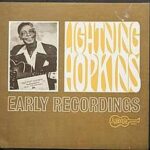
Lightnin’ Hopkins: Gold Star Sessions (Arhoolie CDs, 1990-91, originally released on Arhoolie LPs as Early Recordings, 1963, and Early Recordings Vol 2, 1971)
Lightnin’ Hopkins was recording at a furious pace for various companies in the early 1960s, utilizing his uncanny ability to improvise new songs and adapt old ones on the spot. He had no bigger fan than Chris Strachwitz, owner of Arhoolie Records, who joined the fray, not only recording Hopkins anew but reissuing classic sides recorded for Bill Quinn’s Gold Star label in Houston from 1947 to 1950. Most of the sides, featuring Hopkins alone on guitar, were first issued on Gold Star 78s but several tracks on the 1963 “Early Recordings” LP and the second 1971 volume had never been released before. Hopkins also took a seat at the organ on one session. Each volume contained 16 tracks, expanded to 24 when later issued on CD (now available from Smithsonian Folkways). Strachwitz’ liner notes illuminated Hopkins’ music and his ways, which included going to Quinn’s studio to cut a few sides when he needed cash. These are prime examples of down-home Texas blues and boogies by the man Strachwitz praised as “the most creative folk poet of our time who is without doubt the King of the Blues.”
Classics of Blues Recording – Singles
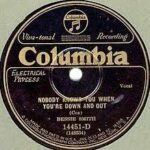
Bessie Smith: “Nobody Knows You When You’re Down And Out” (Columbia, 1923)
Blues empress Bessie Smith delivered one of her finest, most expressive performances on “Nobody Knows You When You’re Down and Out,” a classic hard times blues recorded for Columbia in New York on May 15, 1929. Smith evocatively hummed some of the lines with a band including cornetist Ed Allen and pianist Clarence Williams. The song had been recorded earlier by Pine Top Smith and Bobby Leecan, but it was Smith’s rendition that became an influential classic.
It has been recorded by hundreds of artists including Nina Simone, Louis Jordan, LaVern Baker, Sam Cooke, Otis Redding, Eric Clapton, and Bobby Womack. In his book “Bessie,” Smith biographer Chris Albertson suggested that her heightened emotions in the studio may have been prompted by bad newspaper reviews that morning of her only Broadway play, “Pansy.” Vaudeville performer Jimmie Cox was credited with writing the song. Some of its key lyrics however had earlier appeared on sheet music in 1906 in a song called “All In Down and Out” with words by R.C. McClendon (Cecil Mack).
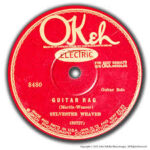
Sylvester Weaver: “Guitar Rag” (OKeh, 1923)
Sylvester Weaver was the Louisville musician who introduced the guitar to blues recording in 1923, first accompanying singer Sara Martin and then on his own solo sides, promoted with a flurry of fanfare about his innovative technique from OKeh Records. He recorded “Guitar Rag” at his first session on November 2, 1923, and again on April 1, 1927, for OKeh in Chicago. Martin received a co-writer credit.
The smooth bottleneck/slide number has lived on as a Western swing and country music standard, “Steel Guitar Rag,” after Bob Wills & the Texas Playboys recorded it in 1936 with Leon McAuliffe on steel guitar.
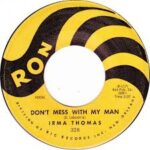
Irma Thomas: “Don’t Mess With My Man” (Ron, 1959)
“Don’t Mess With My Man,” Irma Thomas’ first record, hit the “Billboard” R&B charts in 1960 and not only established her but also provided plenty of women singers with a song to spice up their repertoire in the years to come. Recorded in 1959 for Joe Ruffino and Ron Records in New Orleans, the song was written by Dorothy LaBostrie, who wrote “Tutti Frutti” for Little Richard. Crescent City stalwarts Justin Adams, Robert Parker, and Eddie Bo played in the session. The song has been recorded also known by its opening line, “You Can Have My Husband.”
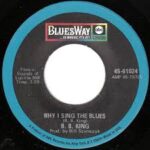
B.B. King: “Why I Sing The Blues” (ABC BluesWay, 1969)
Under the production of Bill Szymczyk, B.B. King updated his blues in both style and subject matter on his March 5, 1969, rendering of “Why I Sing the Blues.” In the pulsating performance, propelled by Gerry Jemmott’s bass, King traced the blues and African-American life back to slave ships and up through ghetto conditions and welfare. Dave Clark, better known for his promotional work with Malaco and other labels but a veteran journalist and songwriter as well, contributed to the opus as co-writer. The New York session band consisted of Jemmott, Paul Harris (piano), Hugh McCracken (rhythm guitar), and Herbie Lovelle (drums). King had recorded an unreleased version in Chicago in 1968 and did a different song with the same title in Los Angeles in 1956. His ABC BluesWay single spent 14 weeks on the “Billboard” R&B charts (15 on “Cash Box”) and generated some crossover pop action as well. The version of King’s “Live & Well” was five minutes longer than the three-and-a-half-minute 45 and featured additional verses and guitar solos by an inspired king of the blues.
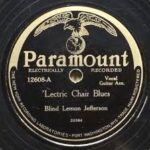
Blind Lemon Jefferson: “See That My Grave’s Kept Clean” (Paramount, 1927)
Blind Lemon Jefferson recorded “See That My Grave’s Kept Clean” for Paramount in Chicago in 1928, following up an earlier version that was issued under a religious pseudonym, Deacon L.J. Bates, 1927 “See That My Grave’s Kept Clean.” His moving performances affected both the secular and the sacred worlds for generations to come. Adding to the lyrical imagery of two white horses, a silver spade, and a golden chain, on one take the Texas blues master plucked a guitar string in imitation of a church bell.
Sometimes titled “One Kind Favor,” the song drew from an old folk spiritual and has been recorded by Bob Dylan, Lightnin’ Hopkins, Furry Lewis, Hank Williams Jr., B.B. King, the Grateful Dead, John Lee Hooker, Mavis Staples (who won a GRAMMY for her rendition), and many more.
In keeping with the favor Jefferson asked in the song, his grave is kept clean in Wortham, Texas. The first verse is engraved on his headstone and the graveyard is now known as Blind Lemon Memorial Cemetery. B.B. King felt so connected to the song that, per his wishes, his casket was drawn by two white horses.
2024 Blues Hall of Fame Inductees
PERFORMERS
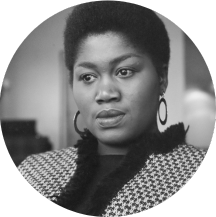
Odetta, hailed as “The Mother Goddess of Folk Blues” by The New York Times, left an indelible mark on the world of folk music for five decades. Her influential career not only showcased her extraordinary musical talents but also paved the way for others, breaking barriers as a woman and an African American in the folk milieu. Born Odetta Holmes on December 31, 1930, in Birmingham, Alabama, she spent most of her childhood in Los Angeles.
Classically trained in college, Odetta possessed a versatile repertoire that spanned blues, spirituals, jazz, songs from various folk and popular traditions, and original topical songs reflecting her commitment as a civil rights activist. Although she occasionally worked the blues club and festival circuit, her blues credentials were undeniable, evident in albums like “Odetta Sings Blues and Ballad,” “Odetta and the Blues,” “Blues Everywhere I Go,” and “Lookin for a Home,” a compilation featuring songs associated with Lead Belly. Her remarkable career included performances in Martin Scorsese’s 2003 “Salute to the Blues” concert, Divas film in Clarksdale, Mississippi, and appearances at the Apollo Theater in Harlem and Blues Foundation events.
Odetta, who was once married to blues singer Louisiana Red, enchanted audiences with her magnetic stage presence and powerful voice, captivating listeners whether singing solo or collaborating with symphony orchestras, jazz bands, ballet troupes, opera companies, or all-star musical aggregations. Odetta’s commitment to social justice was evident as she sang at historic events like the March on Washington and the Selma, Alabama March, as well as at human rights and anti-war rallies. She used her voice not only to entertain but also to advocate for change, performing at benefits, tribute concerts, and schools. Throughout her illustrious career, Odetta collaborated with luminaries such as Harry Belafonte, Dr. Martin Luther King Jr., Nina Simone, Maya Angelou, and Pete Seeger.
Her influence extended to artists like Bob Dylan, Janis Joplin, Joan Baez, Rhiannon Giddens, Eric Bibb, and countless others. Honored by U.S. presidents, the Library of Congress, and numerous organizations worldwide, Odetta continued to perform even in the face of declining health. She passed away in New York on December 2, 2008, leaving behind a legacy that transcends music, resonating in the realms of humanitarianism and education.
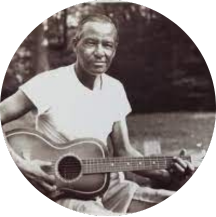
Scrapper Blackwell, born Francis Hillman Blackwell, left an indelible mark on the blues scene as a virtuoso guitarist and collaborator with Blues Hall of Famer Leroy Carr. Though widely recognized for his role in the iconic Carr-Blackwell duo during their recording zenith from 1928 to 1935, Blackwell’s musical prowess extended far beyond accompaniment. Born on February 21, 1903 (though birth details remain uncertain, with some evidence pointing to Indianapolis in 1904), Blackwell, of Cherokee and African-American descent, began his artistic journey crafting makeshift guitars as a child.
His entry into the blues arena was catalyzed when he joined forces with Leroy Carr in 1928. The duo’s sessions yielded timeless classics, with hits like “How Long—How Long Blues” making them a household name. Despite their success, Carr’s untimely death in 1935 led Blackwell to retreat from music, only to be rediscovered by local fans in the 1950s. His raw talent and unique guitar style were showcased in solo recordings and collaborations with emerging musicians. Yazoo Records acknowledged his unparalleled guitar skills, emphasizing his ability to blend heavy bass sections and intricate treble-string runs. In the 1950s, Indianapolis jazz scholar Duncan Schiedt reintroduced Blackwell to a new generation of fans who admired his old recordings. Despite facing periods of unemployment, Blackwell continued to play in local taverns and mentor aspiring musicians.
His unexpected encounters with old admirers led to concert performances and recordings, contributing to the folk-blues revival of the late 1950s and early 1960s. Nicknamed “Scrapper” for his youthful inclination for tussles, Blackwell’s life was marked by both musical triumphs and personal challenges. His journey came to an unfortunate end on October 7, 1962, when he was discovered in an Indianapolis alley, having succumbed to two .22 caliber bullets. Despite the tragic circumstances surrounding his death, Scrapper Blackwell’s legacy endures through his timeless contributions to the blues genre.
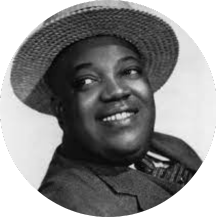
Jimmy Rushing, affectionately known as “Mr. Five By Five” due to his stout stature, was a groundbreaking figure in the world of blues and jazz. Born on June 15 or August 26, 1899 (though he often cited a 1901 birth-date), in Oklahoma City, James Andrew Rushing pioneered the big band blues belting style, leaving an indelible mark on the genre and influencing subsequent blues shouters like Big Joe Turner, Wynonie Harris, and Roy Brown.
Inspired by an uncle, Rushing began his blues journey in California in 1923, where he played piano with Jelly Roll Morton before returning to Oklahoma. He sang in various territory bands, including Walter Page’s Blue Devils, and joined Bennie Moten’s Kansas City Orchestra, marking the beginning of his association with legendary jazz figures. Rushing recorded or performed with luminaries such as Count Basie, Buck Clayton, Benny Goodman, Dizzy Gillespie, Earl “Fatha” Hines, and others. He was the vocalist on the Johnny Otis orchestra’s inaugural record in 1945 and reunited with Otis at the 1970 Monterey Jazz Festival. Rushing’s pivotal recordings with the popular Basie band, starting in 1935, catapulted him to national prominence. Hits like “Good Morning Blues,” “Going to Chicago,” and “Sent for You Yesterday and Here You Come Today” showcased his commanding vocal presence and marked him as a leading figure in the big band era.
He played a significant role in bringing blues to a broader audience. After moving to New York City in the 1950s, Rushing continued his prolific recording and touring career. He worked with various labels, including Vanguard, Columbia, ABC BluesWay, and RCA, releasing albums like “Livin’ the Blues” and “The You and Me That Used to Be.” Despite battling leukemia in his final years, Rushing continued to receive accolades, posthumously winning a Down Beat magazine poll as Best Male Singer shortly after his death in June 1972. Rushing’s contributions to blues and jazz were immeasurable, bridging the gap between the genres and influencing a wide array of singers. Although recognition may have faded among more recent generations of blues enthusiasts, his impact on blues, jazz, pop, and rhythm & blues remains undeniable. Rushing’s career reached far and wide, spreading the appeal of the blues to a broader audience than ever imagined.
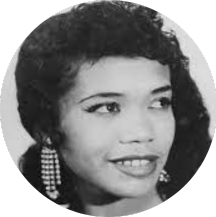
Sugar Pie DeSanto packed astonishing power and plenty of personality into a tiny frame. Her spunk and vigor impressed bandleader and producer Johnny Otis enough to sign her to her first recording session in 1955 after witnessing her performance at a San Francisco talent show. It was Otis who named her Sugar Pie in preference to using her given name, Peylia Balinton. A ballet student as a child, she was born in Brooklyn on October 16, 1935, to a Filipino father and African American mother, but grew up in the Bay Area and continued to live there except for a spell in Chicago when she was with Chess Records in the 1960s.
After her 1955 debut for Federal Records, Sugar Pie recorded a few more singles, often with her husband, guitarist Alvin Parham, aka Pee Wee Kingsley, acquiring the DeSanto moniker from producer/DJ/club owner Don Barksdale. Her biggest hit, “I Want to Know,” produced by Bob Geddins on the Veltone label, rose to No. 4 on Billboard’s R&B chart in 1960 and led to a contract with Chess. The DeSanto magic also energized the already dynamic James Brown revue for two years. During her tenure with Chess, she had some hits on the subsidiary Checker label, including “Slip-In Mules,” an answer to Tommy Tucker’s “Hi-Heel Sneakers, and “In the Basement” on the Cadet imprint, a duet with longtime friend Etta James, who was often at the Balinton home as a youngster. Sugar Pie’s records also clicked with the Northern Soul crowd in England, enough so that she left the all-star cast of the 1964 American Folk Blues Festival’s European tour to make U.K. appearances of her own.
Under various names including Peylia Parham and P. Parham DeSanto she began writing songs for other artists at Chess, including Billy Stewart, Fontella Bass, and Little Milton. Sugar Pie took her act back to Oakland and remained active and still saucy even into her octogenarian years, a local favorite as well as a world traveler. When times were slow, she worked as a paralegal. The Rhythm & Blues Foundation provided support after she lost her husband Jessie Davis in a fire at their apartment. The Foundation also presented her with a Pioneer Award, one of several honors she has earned from various sponsors, including the Arhoolie Foundation and Blues Blast magazine. She found a recording home with her manager James C. Moore’s Jasman label, which began releasing DeSanto’s output in 1972, sprinkling her catalog with titles befitting her persona such as Sugar Is Salty, Refined Sugar, and Sugar’s Suite.
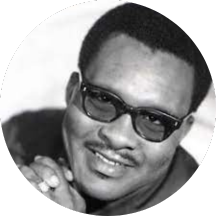
O.V. Wright, recognized for his powerful fusion of blues, soul, and gospel, brought unparalleled emotion-drenched intensity to his music. Born Overton Vertis Wright on October 9, 1939, in Lenow, Tennessee, near Memphis, he began his musical journey singing church music and later professionally with the Sunset Travelers. Despite his deep roots in gospel, O.V. Wright transitioned to secular music, making a significant impact with his unique blend of blues. Wright’s early success came with the Goldwax label in Memphis, where his debut R&B record, “That’s How Strong My Love Is,” showcased his impressive vocal prowess.
However, legal battles ensued over contractual obligations, eventually leading him to the Back Beat label owned by Don Robey of Peacock Records. Back Beat became the platform for many of Wright’s notable recordings, including hits like “You’re Gonna Make Me Cry” and “Eight Men, Four Women.” Willie Mitchell and the Hi Rhythm Section played a crucial role in shaping the sound of Wright’s music, leading to several successful collaborations in the ’70s, such as “Ace of Spade” and “A Nickel and a Nail.” Mitchell, known for his work with Al Green, praised Wright as his most consistent artist in the studio. Onstage, O.V. Wright delivered dynamic performances often likened to that of a preacher, seamlessly blending verses from the blues and the Bible.
While he found success on the chitlin circuit, health issues, a criminal record, and a narcotics conviction hindered his career. In his final years, Wright continued performing, leaving a lasting mark on stages across the country. He passed away on November 16, 1980, while performing at Joe’s Supper Club in Grand Bay, Alabama. His legacy lives on through a core global following that includes hip-hop artists who have sampled his music. In 2008, a group of fans honored him with a headstone, acknowledging his profound impact on the worlds of blues, soul, and gospel. Johnny Rawls and Otis Clay recorded a tribute CD, “Remembering O.V.,” ensuring that O.V. Wright’s contributions to music endure.

Lurrie Bell, a prominent figure in the blues world, follows in the footsteps of his late father, harmonica maestro Carey Bell, who was inducted into the Blues Hall of Fame in 2023. Born on December 13, 1958, in Chicago, Lurrie developed into an extraordinary blues guitarist during the 1970s, displaying remarkable talent even as a teenager. Despite facing personal trauma and tragedy throughout his life, Lurrie’s enduring passion for music has carried him into his senior years with the same youthful exuberance. Growing up in a musical environment, Lurrie drew inspiration from his father’s musical circle, notably guitarist Eddie Taylor.
His early experiences included playing in a band with pianist Lovie Lee, the musician credited with bringing Carey Bell to Chicago from Mississippi. Lurrie’s childhood also involved living in Mississippi and Alabama, where he played gospel music in church alongside his Bell brothers, collectively known as “The Ding Dongs.” Lurrie’s journey into professional music began in 1977 when he recorded on a session with his father, Carey Bell, and played bass on an Eddie C. Campbell album. That same year, he joined forces with Billy Branch and other emerging blues musicians in the “New Generation of Chicago Blues” package in Berlin. The collaboration with Branch evolved into the Sons of the Blues (S.O.B.) band, solidifying Lurrie’s status as one of the rising stars in the blues scene.
His guitar skills and innate understanding of the blues genre gained recognition as he recorded with various artists, including Koko Taylor, Eddy Clearwater, Sunnyland Slim, and Louisiana Red. Despite personal challenges, including periods of depression, isolation, and life on the streets, Lurrie’s musical talents continued to captivate audiences. His life took a challenging turn with the passing of his partner, photographer Susan Greenberg, and the heartbreaking loss of their twin babies. Carey Bell’s death in 2007 added to the hardships, yet Lurrie’s unique musical abilities served as a lifeline, bringing him back to a sense of sanity. Over the years, Lurrie faced personal challenges, but his musical journey persisted.
Amberly Stokes, a devoted supporter and former Rosa’s Lounge employee, became Lurrie Bell’s advocate. Under her care and management, he found stability, a supportive home life, and renewed worldwide acclaim for his remarkable talent. Lurrie’s enduring contribution to the blues genre, resilience, and captivating performances solidified his place in the Blues Hall of Fame.

Lil’ Ed and The Blues Imperials stand as a testament to the enduring power of tight-knit, infectiously cheerful blues bands. Led by singer and slide guitar maestro Lil’ Ed Williams, the group, which includes his half-brother and bassist James “Pookie” Young, along with Mike Garrett on guitar and Kelly Littleton on drums, has been making music together for over thirty-five years.
Their energetic brand of boogie blues finds its roots in the legacy of another Chicago slide master, Ed’s uncle and mentor J.B. Hutto, a Blues Hall of Fame inductee in 1985. The Blues Imperials, inspired by a TV commercial for Imperial margarine, burst onto the scene in 1986 when Alligator Records owner Bruce Iglauer invited them to record two songs for a compilation. In true Chicago blues lore fashion, the session turned into a lively party, resulting in 30 songs in three hours and securing Lil’ Ed and the Blues Imperials a contract for their debut album, “Roughhousin’.” This milestone allowed Lil’ Ed to bid farewell to his job at a local car wash. Born on April 4, 1955, in Chicago, Ed Williams passionately embraced a style reminiscent of his uncle J.B., both vocally and instrumentally.
Mirroring Hutto’s iconic look, Ed even dons a fez during performances. His acrobatic showmanship and humorous stage presence brought a good-time element to the blues, captivating audiences and earning him a dedicated following of fez-wearing “Ed Heads.” Despite a brief hiatus in the 1990s for solo projects, Lil’ Ed and The Blues Imperials regrouped, rejoining Alligator Records, and solidifying their status as label mainstays.
With nine albums to their credit, the core quartet, occasionally featuring saxophonist Eddie McKinley, has consistently delivered upbeat live shows and recordings, embodying the trademark “Genuine Houserocking Music” associated with Alligator Records. The band’s energetic performances continue to perpetuate the spirit of their influences, including Hound Dog Taylor and the HouseRockers, ensuring that the legacy of Lil’ Ed and The Blues Imperials remains synonymous with high-octane blues that genuinely rocks the house.
INDIVIDUALS
BUSINESS, PRODUCTION, MEDIA, or ACADEMIC

William R. “Bill” Ferris, a prominent figure in the world of blues, is celebrated for his multifaceted contributions as an author, folklorist, professor, lecturer, and administrator. Born on February 5, 1942, in Vicksburg, Mississippi, Ferris has played a pivotal role in documenting and preserving the rich cultural heritage of the American South, particularly in the realms of blues, gospel, and storytelling. Ferris initiated his work in the 1960s by recording, photographing, and filming blues musicians, gospel singers, and storytellers in Mississippi.
His family’s farm in Vicksburg served as the backdrop for his early documentation efforts. Ferris focused not only on the musical aspects of the artists but delved into the broader context of their lives, folk traditions, and stories, providing a unique and comprehensive perspective on the cultural significance of the music within their communities. Having earned several college degrees, including a Ph.D. in Folklore from the University of Pennsylvania, Ferris embarked on a career as an educator. He taught at institutions such as Jackson State University and Yale University in the 1970s. Ferris co-founded the Center for Southern Folklore in Memphis and later directed the Center for the Study of Southern Culture at the University of Mississippi. His involvement in preserving blues history included hosting the “Highway 61” radio show and releasing recordings on the Southern Culture label. Ferris’s contributions extended to the acquisition of Living Blues magazine and significant materials, including B.B. King’s record collection, which formed the core of the Blues Archive at the University of Mississippi.
He took on a role at the University of North Carolina in 2002 as a professor and Associate Director of the Center for the Study of the American South. His literary works, notably Blues From the Delta (1970) and Give My Poor Heart Ease: Voices of the Mississippi Blues (2009), showcase his commitment to exploring the social and cultural dimensions of the blues. Ferris’s comprehensive efforts received widespread acclaim, with Blues From the Delta earning recognition as a Classic of Blues Literature by the Blues Hall of Fame in 1998. One of Ferris’s remarkable achievements is the Dust-to-Digital box set Voices of Mississippi: Artists and Musicians Documented by William Ferris, which won a GRAMMY in 2019. This extensive project includes multi-media presentations featuring live performances from renowned artists like Bobby Rush, Sharde Thomas, and Luther and Cody Dickinson, further solidifying Ferris’s impact on the preservation and celebration of Southern musical heritage.
CLASSIC OF BLUES LITERATURE
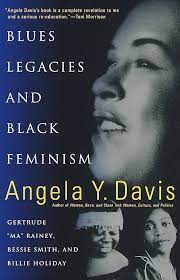
CLASSIC OF BLUES RECORDING – ALBUM
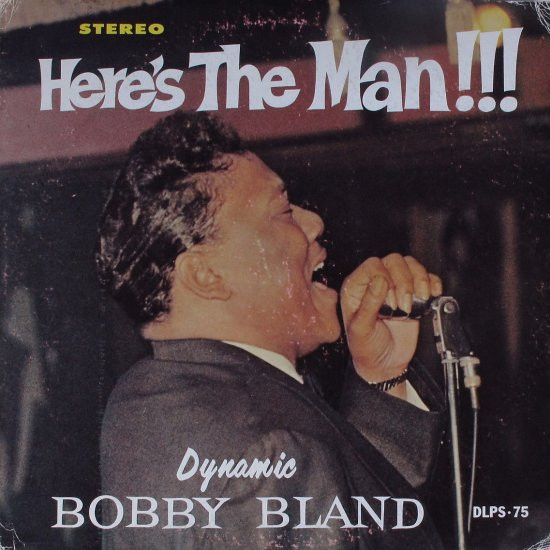
Here’s the Man!!!, Bobby Bland’s second full LP on the Houston-based Duke label, was loaded with the kind of first-rate blues and R&B that made Bland such an idol in his time. In common with other blues LPs of the era, the music wasn’t produced at an album session but was assembled primarily from singles recorded at different dates—in this case, in Chicago, Los Angeles and Nashville in 1961 and 1962 under the direction of master arranger Joe Scott. Highlights include a sterling rendition of “Stormy Monday Blues” that brought T-Bone Walker’s 1940s classic “Call It Stormy Monday” back to prominence, featuring a famous Wayne Bennett guitar solo; “Your Friends” and other exemplary slow blues; the urgent “Ain’t That Loving You”; and one of the hottest dance rave-ups ever, “Turn on Your Love Light.” Even the fanfare-fueled spoken introduction is a classic—“Here’s the man! I mean the man! The sensational . . . the incomparable . . . the dynamic . . . Bobby, Bobby Bland!” The liner notes, co-written by the legendary, promotion man and journalist Dave Clark of later Malaco Records fame contain nuggets as well, like the little-publicized revelation that Bland and future celebrity Eddie Fisher served in the army together. Bland is billed both on the cover and the vinyl label as Dynamic Bobby Bland, and indeed he was.
CLASSICS OF BLUES RECORDING: SINGLE
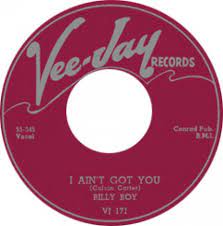
“I Ain’t Got You”- Billy Boy Arnold (Vee-Jay, 1955)
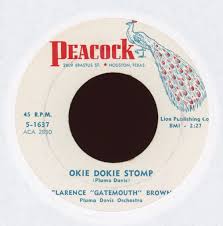
“Okie Dokie Stomp”- Clarence “Gatemouth” Brown (Peacock, 1954)
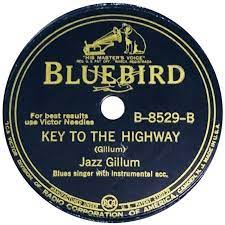
“Key to the Highway” – Jazz Gillum (Bluebird, 1940)
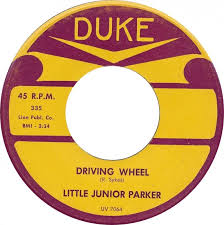
“Driving Wheel” – Junior Parker (Duke, 1961)
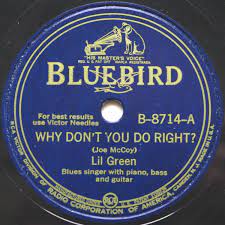
“Why Don’t You Do Right?” – Lil Green (Bluebird, 1941)

We invite you to listen to The Blues Foundation Podcast!
Season 1: Blues Hall of Fame centers on a different Blues Hall of Famer, and explores a specific moment in their life.
Produced by Beale Street Caravan. Written by Preston Lauterbach. Voiced by Guy Davis.
LISTEN NOW
Blues Hall of Famers Speak the Blues
Bobby Rush
Elvin Bishop
Become a Member
Becoming a member of The Blues Foundation gives you an opportunity to be personally connected to a blues community where you will experience a vast amount of resources, information, news, views, insight, and activities not available anywhere else. You will become part of this fantastic Blues family which shares your love of the Blues, past, present and future.
Photos by Roger Stephenson
Donate
Since 1980, The Blues Foundation has been inducting individuals, recordings, and literature into the Blues Hall of Fame, but until recently there has not been a physical home to celebrate their music and stories. Building the Blues Hall of Fame Museum has fulfilled one of our key goals – The creation of a space to honor inductees year-round; to listen to and learn about their music; and to enjoy historic mementos of this all-American art form. The new Blues Hall of Fame is the place for serious blues fans, casual visitors, and wide-eyed students. It facilitates audience development and membership growth. It exposes, enlightens, educates, and entertains. The Blues Hall of Fame opened May 8, 2015.

